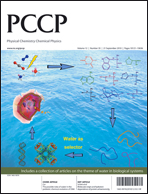We investigate the quality of structural models generated by the Reverse Monte Carlo (RMC) method in a typical application to glass systems. To this end we calculate diffraction data from a Li2O–SiO2 molecular dynamics (MD) simulation and use it, in addition to minimal pair distances and coordination numbers of silicon (oxygen) to oxygen (silicon) ions, as input for RMC modeling. Then we compare partial radial distribution functions, coordination numbers, bond angles, and ring sizes predicted by the RMC models with those of the MD system. It is found that partial distribution functions and properties on small lengths scales, as distributions of coordination numbers and bond angles, are well reproduced by the RMC modeling. Properties in the medium-range order regime are, however, not well captured, as is demonstrated by comparison of ring size distributions. Due care therefore has to be exercised when extracting structural features from RMC models in this medium-range order regime. In particular we show that the occurrence of such features can be a mere consequence of the chosen starting configuration.

You have access to this article
 Please wait while we load your content...
Something went wrong. Try again?
Please wait while we load your content...
Something went wrong. Try again?


 Please wait while we load your content...
Please wait while we load your content...